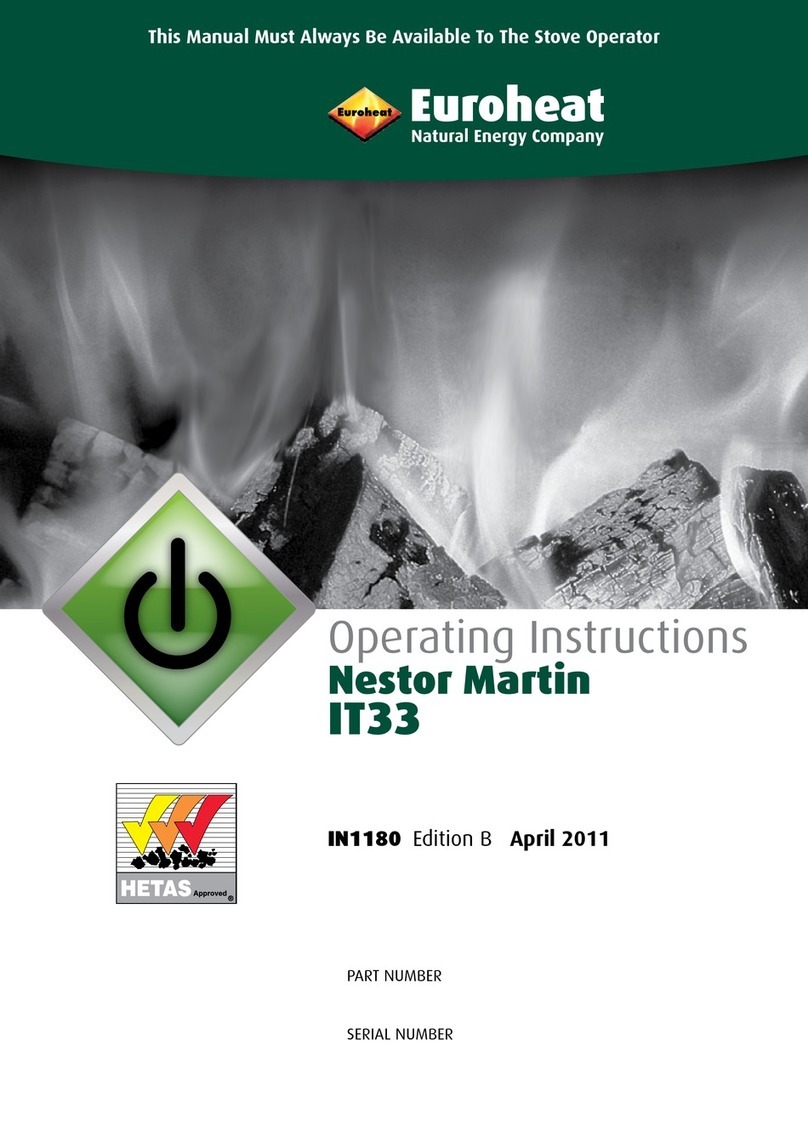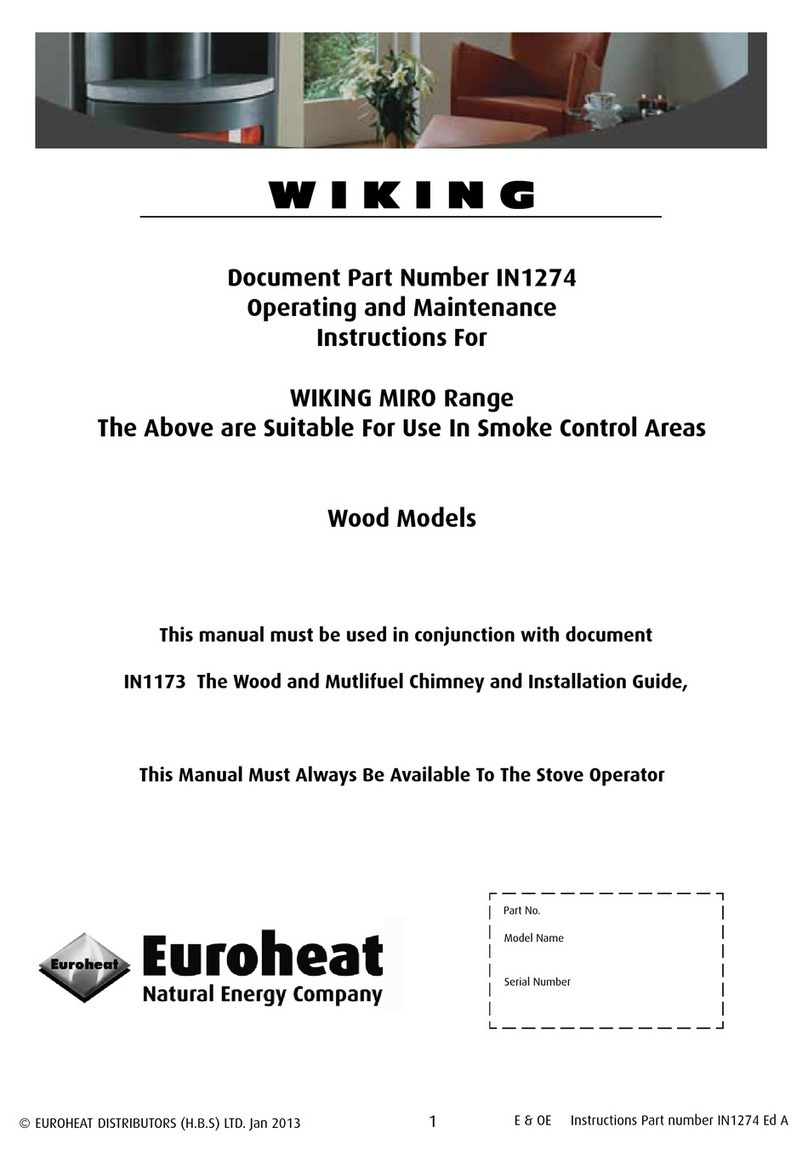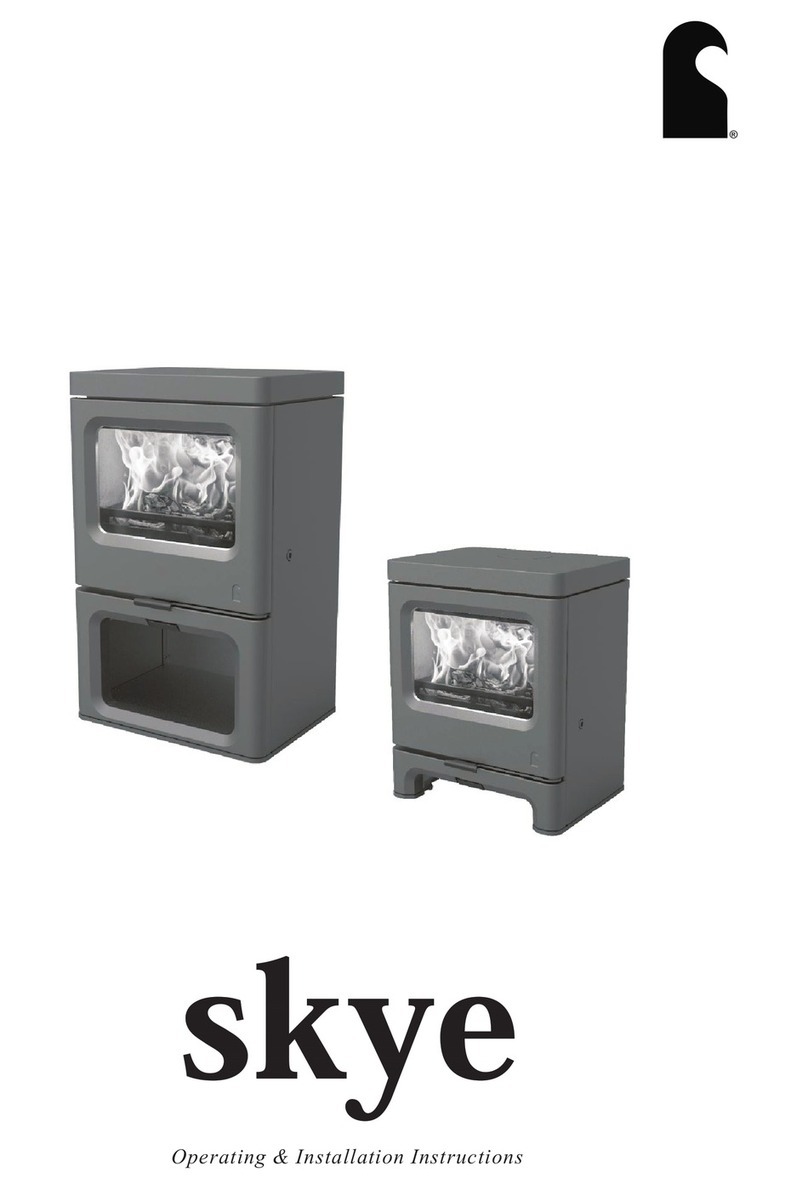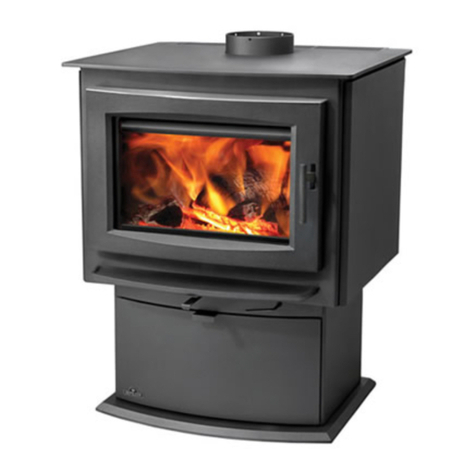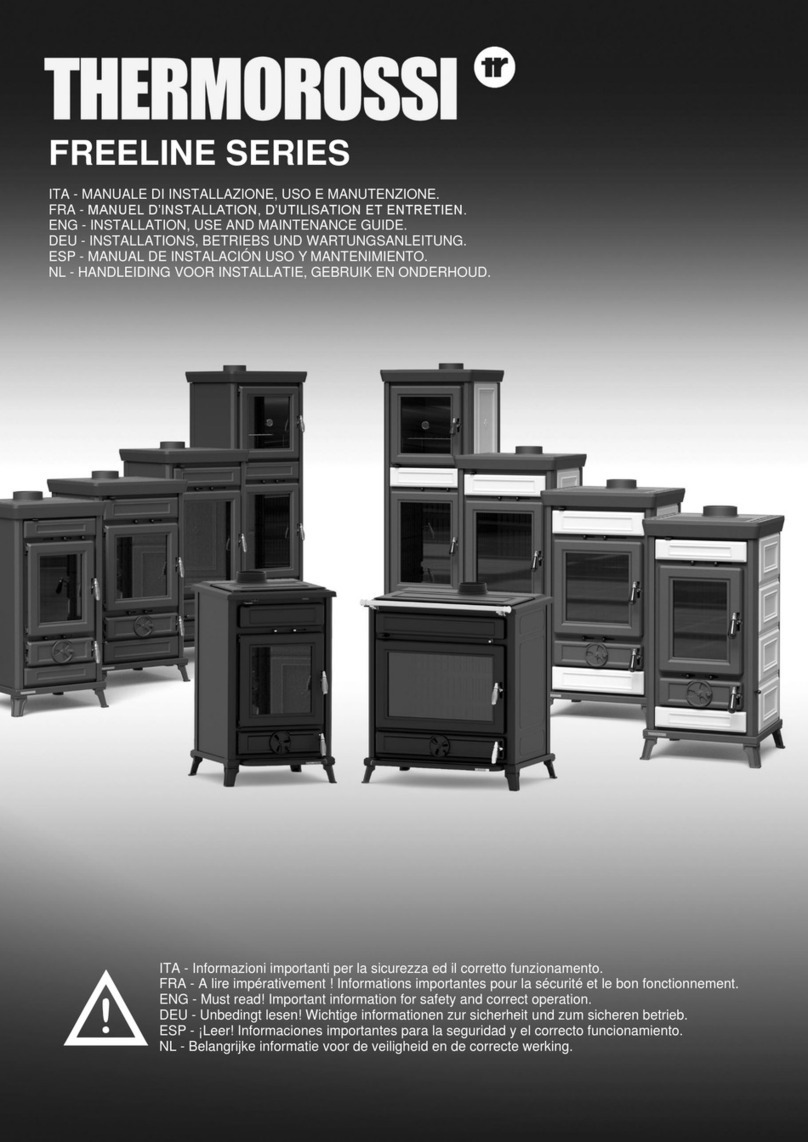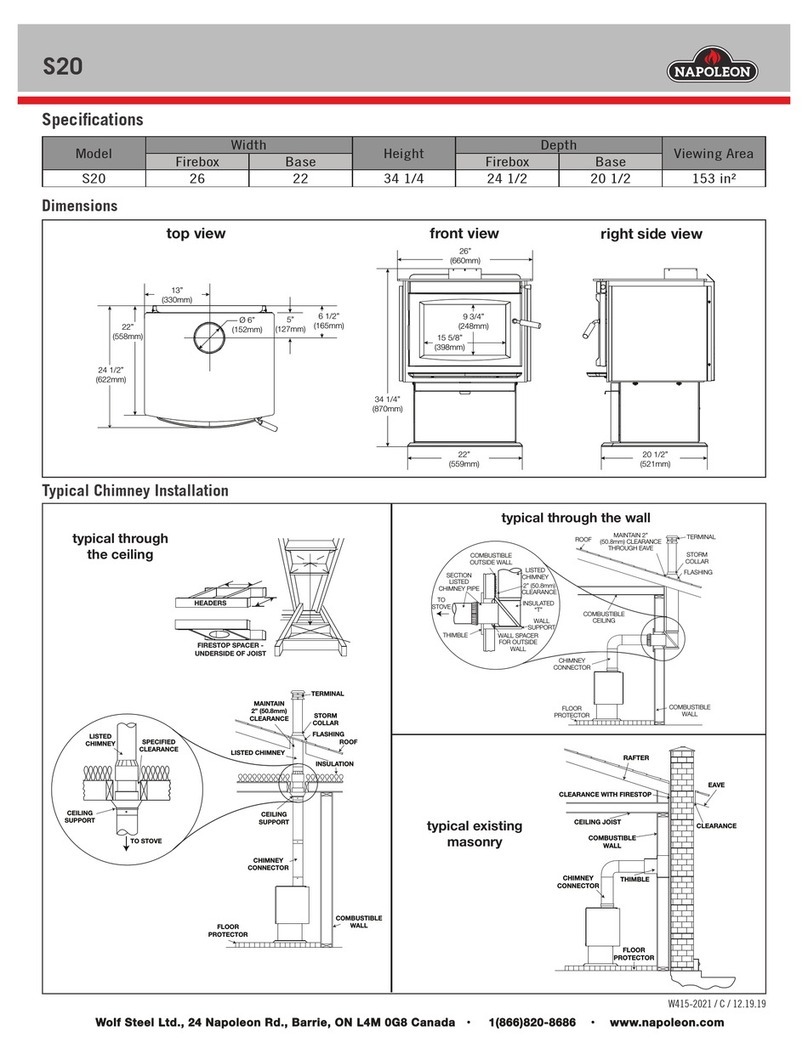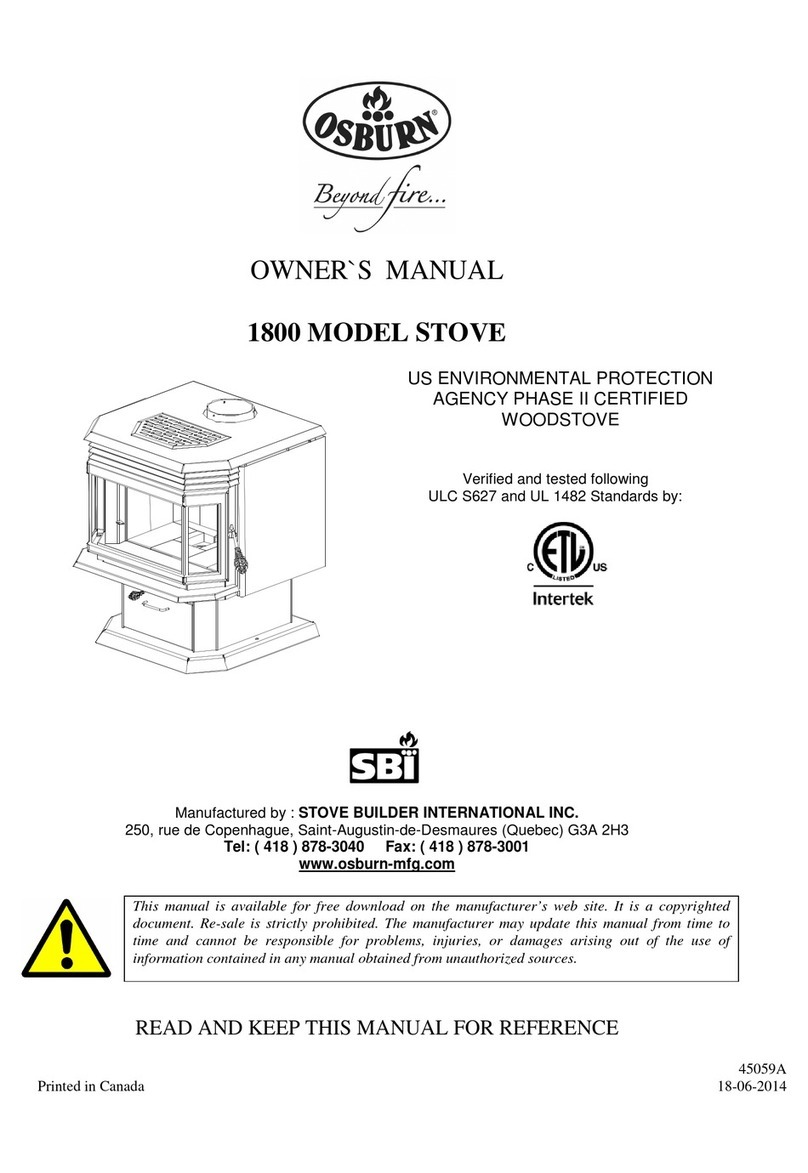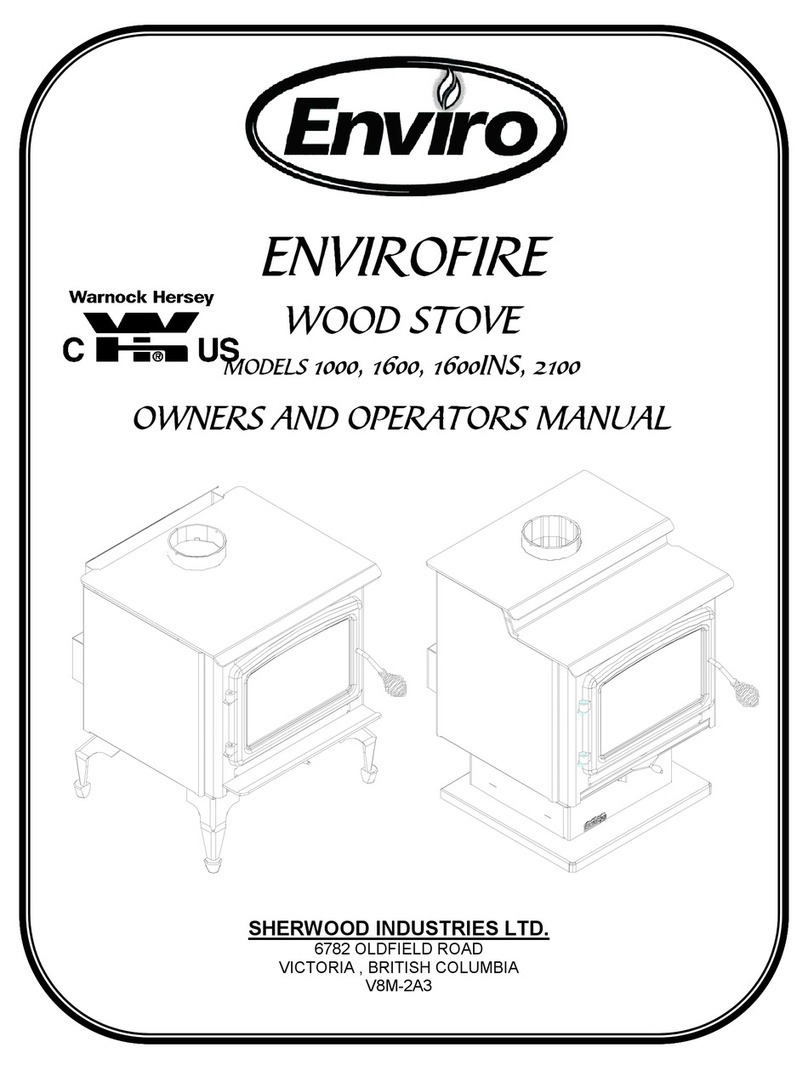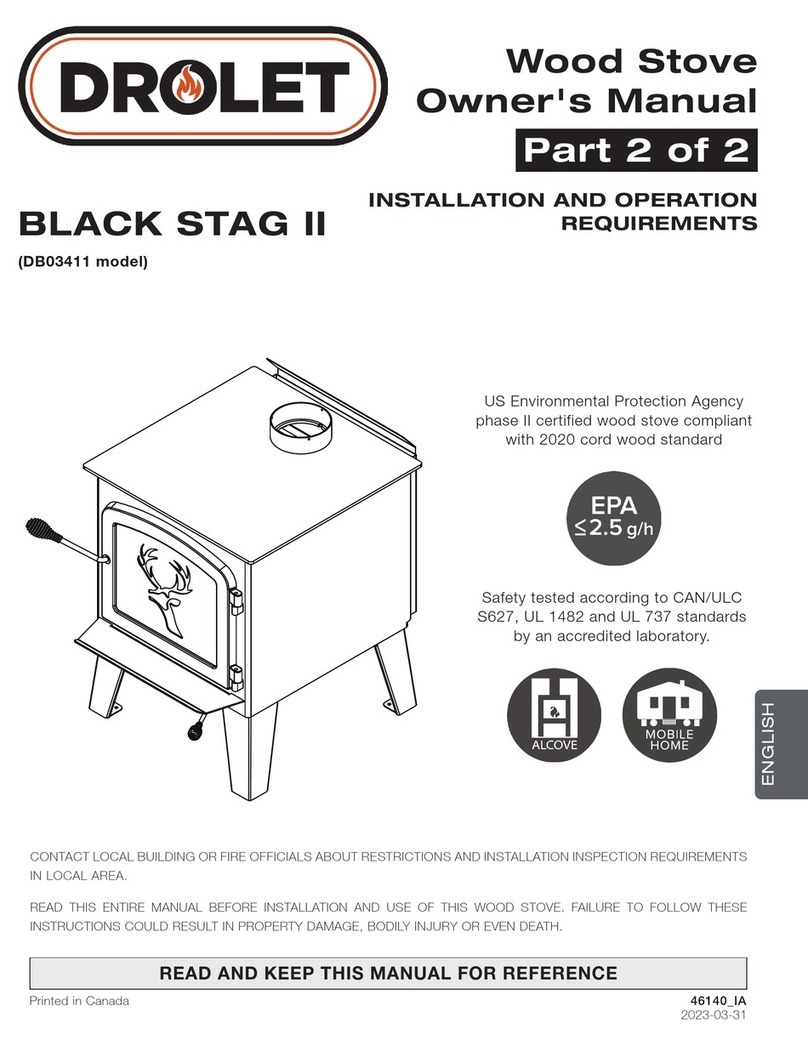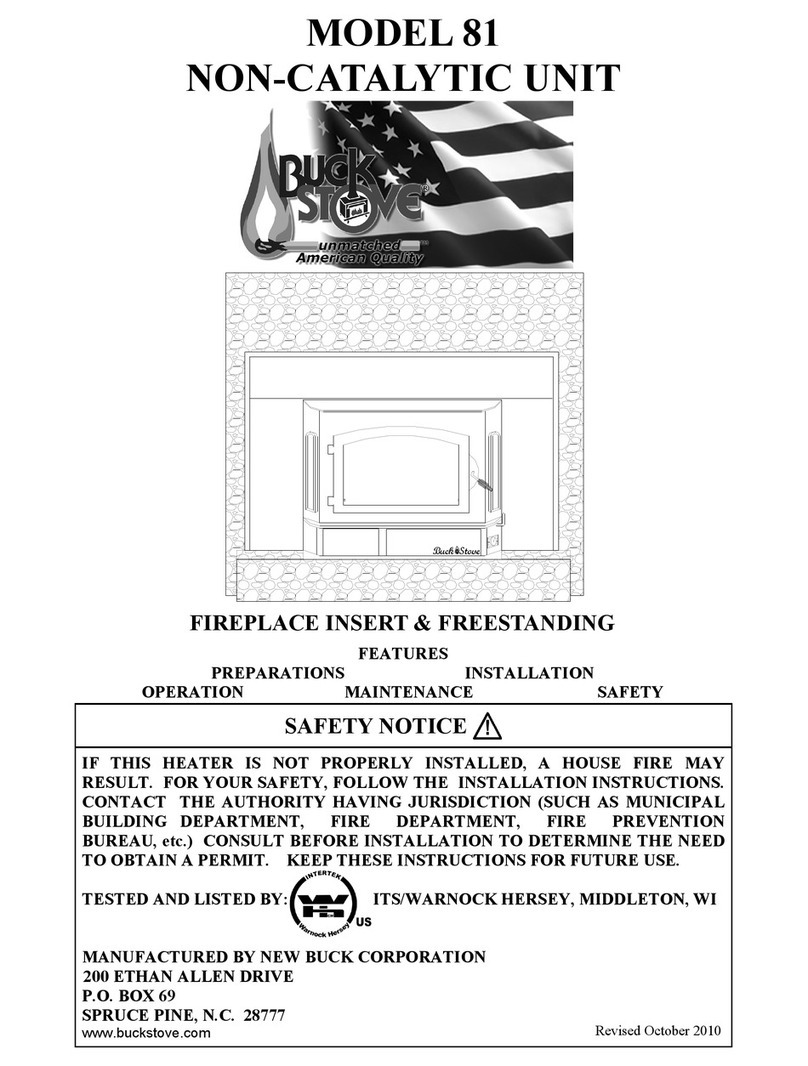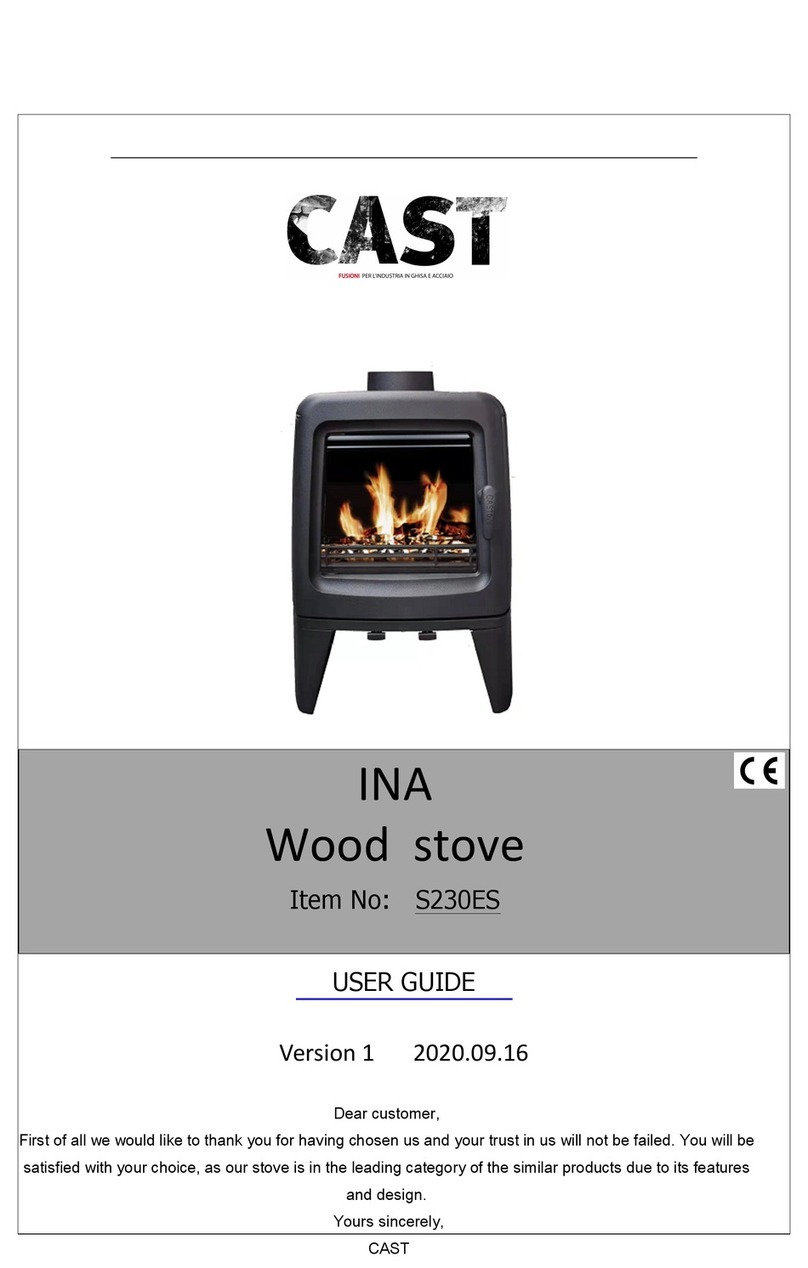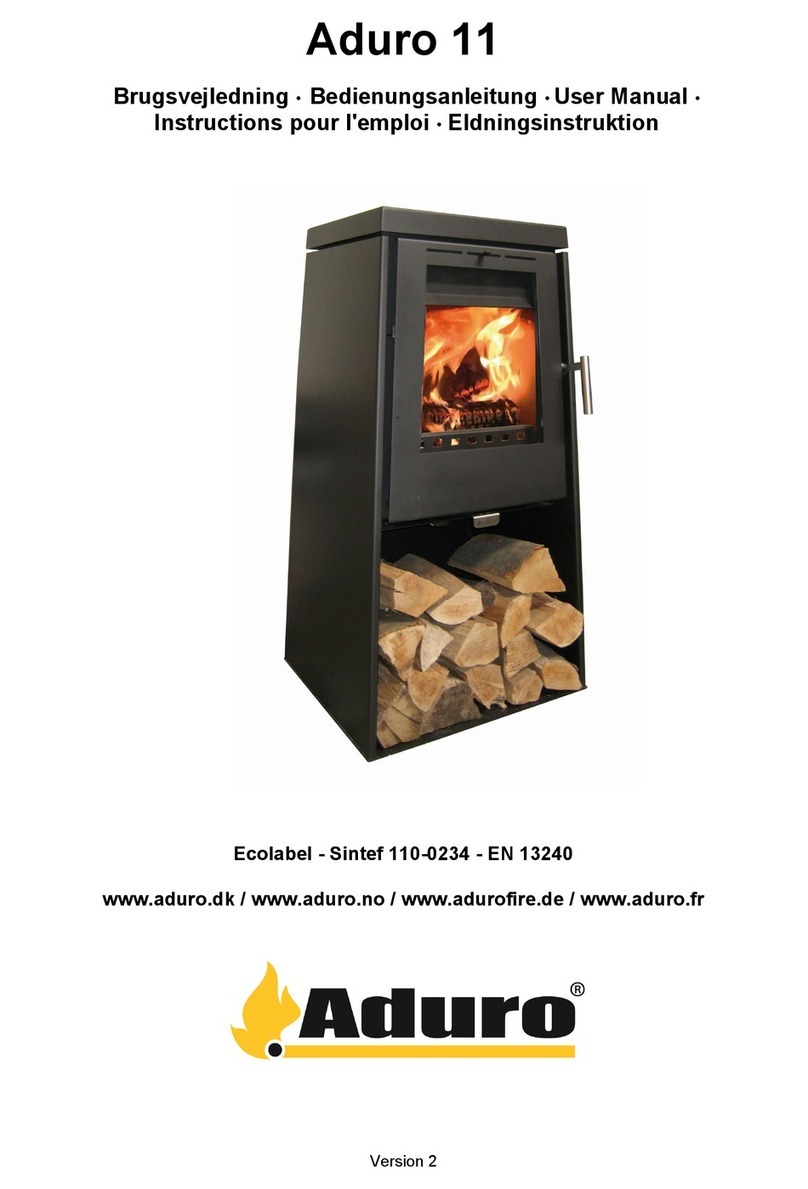
Instructions Part Number IN1143 Ed.B
6
© EUROHEAT DISTRIBUTORS (H.B.S.) LTD. Nov 2006
Understanding Wood Stoves
Gas and oil are consistent fuels and stoves can be designed to obtain the maximum heat from them with the
user having to do no more than choose a heat setting. Wood is almost infinitely variable and however well a
stove has been designed, to have the ability to realize the full potential from wood, the stove’s performance
will ultimately depend on the way the user operates it. Whilst we have endeavoured to make the stove as
simple to operate as possible, understanding just a little about wood and the way your stove was designed to
burn it will be rewarded by your being able to achieve the best from your stove with the least effort.
As a fuel, wood is an environmentally friendly, renewable source of energy, giving the most visual pleasure
of any fuel when burning correctly. Unfortunately, because wood is regarded as a natural and basic fuel it is
often not appreciated as being the most complex of all domestic fuels and much potential heat is often lost
by it being burned incorrectly.
Wood can be thought of as having two differing components which burn. The fixed carbons which burn as the
glowing embers, and the compounds that vaporize when heated to burn as gasses. The fixed carbon, which
is charcoal, is a virtually trouble free fuel needing little assistance to burn cleanly, but it would be difficult to
describe it as visually entertaining. The visual impact comes from the vapourizing components that convert
to the gasses giving the bright, endlessly changing flame patterns when burning properly, but cause all the
problems associated with wood burning if they fail to burn correctly.
Wood releases its volatile components when heated. If wood is placed on a hot fire bed, or into a hot stove,
it will begin releasing its volatile components almost immediately as it heats. If these gases are below their
ignition temperature and fail to ignite they will be lost heat and a pollutant, however much air is available.
If the stove surfaces are below the temperature at which these volatiles vaporize, the released volatiles will
condense back into tars as they come into contact with the metal and glass, causing the familiar staining of a
badly running stove. If the stove is above this temperature, but the flue is not, these tars will condense onto the
walls of the flue causing a fire hazard. If the gasses are released into a stove and flue at their correct operating
temperature but are released with insufficient air to ensure complete combustion, these unburned gasses will
not stain the stove, or coat the flue, but they are a waste of potential heat and pollute the atmosphere.
The erroneous practice of filling a stove with fresh wood, whilst operating the stove with a minuscule air
supply, as a technique to operate for long periods without attention, will cause both the above situations to
occur during the burning cycle of the wood. Properly controlling the rate at which wood burns is therefore
not simply a matter of restricting the air supply, nor of running the stove with a very small fire. A correctly
operating stove will maintain releasing volatiles above their ignition temperature and supply sufficient air to
ensure all the volatiles burn completely.
The model 23 stove supplies air to the wood, heated and as slowly as possible so as not to blow out or chill
any established flames, and it comes in across the full width of the stove ensuring that all parts of the stove
receive an equal air supply. Because the air enters slowly over a curved blade it is directed towards the burning
volatiles rather than the bed of the fire, allowing the volatile components to use the incoming air as a priority,
and governs the air supplied to the bed of the fire. This limits the generation of more volatiles until air becomes
available.
Continually placing new logs into the stove whenever previous logs have almost stopped producing flames
allows a bed of embers to build up within the stove. These embers are the clean burning charcoal, which
not only stabilize the heat output from the stove by burning in proportion to the available air but is a fuel
capable of burning cleanly for incredibly long periods with restricted amounts of air allowing the stove to burn
overnight without risk of smoke or tar deposits.
Because the stove is designed to achieve clean combustion by balancing the air supply and direction with the
fuel available it will perform at its best if the air volume control is set to one position and wood is introduced
into the stove whenever necessary. Constantly adjusting the stove’s controls will upset this balance and give
poor economy and unacceptable amounts of emissions.























